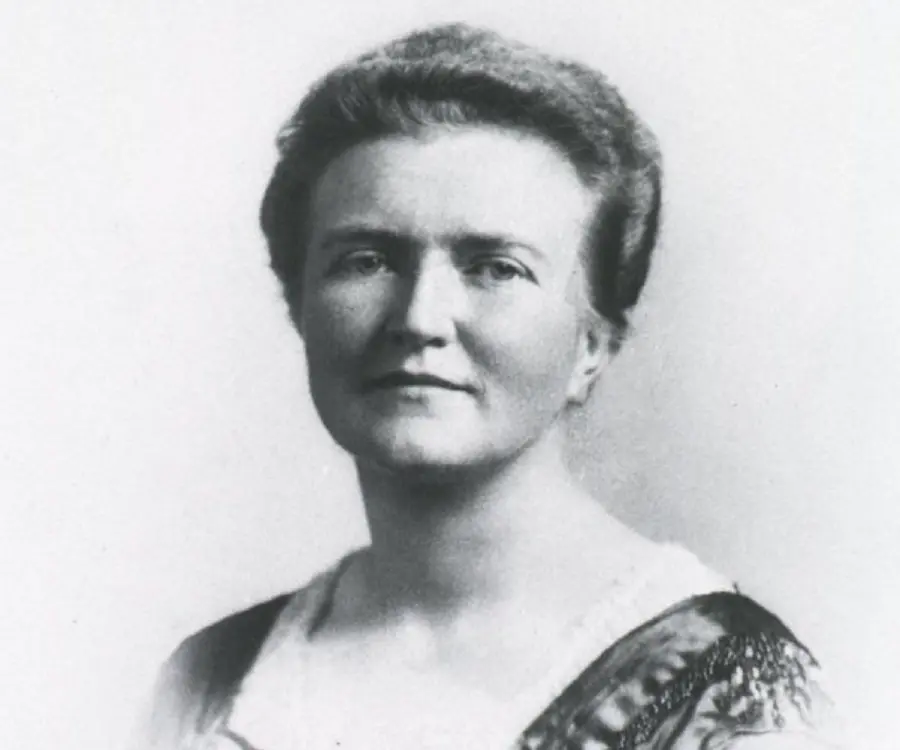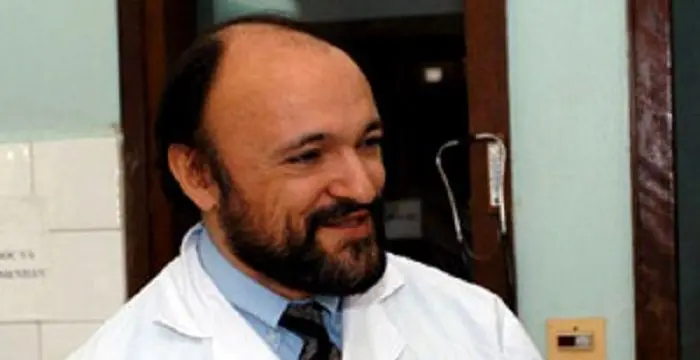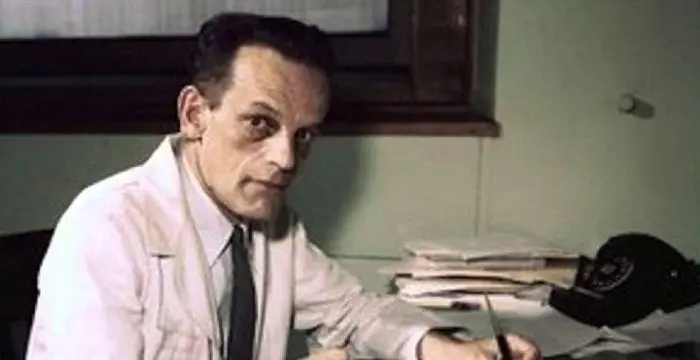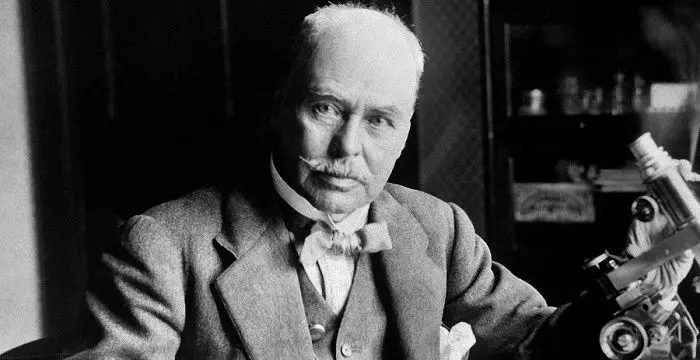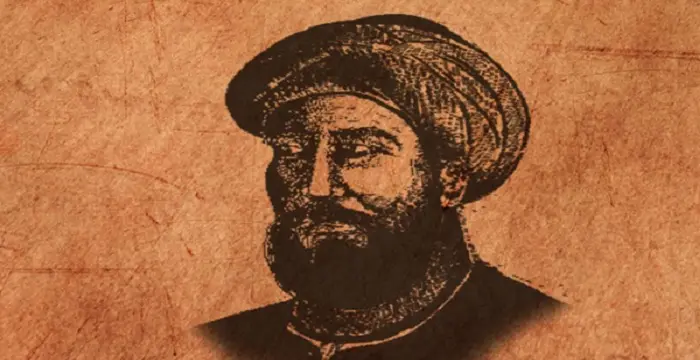
Janet Lane-Claypon - Epidemiologists, Timeline and Childhood
Janet Lane-Claypon's Personal Details
Dr
| Information | Detail |
|---|---|
| Birthday | February 3, 1877 |
| Died on | July 17, 1967 |
| Nationality | British |
| Famous | Physicians, Epidemiologists, Scientists |
| Birth Place | Lincolnshire |
| Gender | Female |
| Sun Sign | Aquarius |
| Born in | Lincolnshire |
| Famous as | Physician |
| Died at Age | 90 |
// Famous Scientists
Juliane Koepcke
Juliane Koepcke is a German-Peruvian biologist, who was the lone survivor among the 92 passengers and crew of the ill-fated LANSA Flight 508 that crashed in the Peruvian rainforest on 24 December 1971. Know more about her life in this biography.
Henry Cavendish
Henry Cavendish was a theoretical chemist and physicist, renowned for discovery of hydrogen and calculation of the mass of earth. To know more about his childhood, profile, timeline and career read on
Konstantin Tsiolkovsky
Konstantin Tsiolkovsky was a Russian rocket scientist and a pioneer of astronautics. This biography provides detailed information about his childhood, family, personal life, career, achievements, etc.
Janet Lane-Claypon's photo
Who is Janet Lane-Claypon?
Dr. Janet Elizabeth Lane-Claypon was an English physician who was as one of the founders of epidemiology and was also a pioneer in the use of cohort as well as case-control studies. Educated primarily at home until she entered University College at the age of twenty-two, she went on to earn both PhD and MD within a short span of time. This made her an early example of the ‘Doctor-doctor’ phenomenon. Later, she began her career in research, working first on the bacteriology and biochemistry of milk and subsequently on the effect of the ‘Poor Law’ on the children. By working with two cohorts of babies, she established that breast-fed babies gained weight faster than babies fed with cow’s milk. Moreover, the work enabled her to refute the general belief that heating destroys the nutritious value of milk. Subsequently, she began to advocate reforms in child care, midwifery training and parental services. Later, she moved to the field of epidemiologic research, dealing mainly with the cancer of the breast and developed the ‘case-control study.’ She also researched on cancers of uterus, lip, tongue and skin. In addition to that, she had thirty-two publications to her name.
// Famous Epidemiologists
Carlo Urbani
Italian epidemiologist Carlo Urbani was the first person who identified SARS as a highly contagious disease. Find out more about his life in this biography.
Max Theiler
Max Theiler was a South African-American virologist who developed a vaccine against yellow fever. This biography of Max Theiler provides detailed information about his childhood, life, achievements, works & timeline.
Ronald Ross
Ronald Ross was a famous British Nobel-laureate, well-known for his extensive research on malaria. This biography provides detailed information about his childhood, profile, career and timeline
Childhood & Early Life
Janet Elizabeth Lane-Claypon was born on 3 February 1877 in Boston, Lincolnshire, UK. Her father, William Ward Lane-Claypon was a wealthy banker and a magistrate. Her mother was Edith Stow Lane-Claypon.
Not much is known about Janet’s childhood except that she was an intelligent girl and had her early education at home. In 1898, she entered University College, London, where she studied physiology with Ernest H. Starling, an outstanding British physiologist, known for his fundamental contributions to this subject.
In 1902, Janet Lane-Claypon graduated from University College with first class honors, receiving a gold medal and an exhibition for her research on rabbit ovary. Thereafter, she started working for her doctoral degree.
Working with E.H. Starling and E. A. Sharper-Schafer, she received her Doctorate of Sc in Physiology in 1905. Her thesis was on the developmental histology of the ovary and the hormonal control of lactation. Later, the work was extensively cited by Francis Marshall in his 1910 textbook, ‘The Physiology of Reproduction.’
Not satisfied with what she had so far achieved, she joined the London School of Medicine for Women, receiving her MBBS in 1907 and MD in 1910. Thus she became an early example of the “Doctor-doctor” phenomenon, not at all common at that time.
As Research Scholar
In 1907, soon after receiving her MBBS, Janet Lane-Claypon joined the staff of the Lister Institute of Preventive Medicine as a research scholar. Financed by a scholarship from British Medical Society, she began her research on the bacteriology and biochemistry of milk.
Her research revealed the presence of hemolytic factors in the milk and also the effect of heating on bacterial contamination. More importantly, it refuted the commonly held belief that heating destroyed the nutritional values of milk. Much of the work was later published in a book form.
In 1909, she received a Jenner Fellowship from the Lister Institute to study maternal and child health programs in Europe. She first investigated the effect of the ‘Poor Law’ on the children of the economically backward class in England and then travelled to Germany to visit the facilities at Berlin.
After comparing the rate of child mortality in England and Germany, she advocated adoption of ‘Kindersyl’, the German welfare policy for children. The work was published in 1910 as ‘Poor-Law Babies in London and Berlin.’ From this point, she was identified as an advocate of child-care reforms.
Teaching Career
Also in 1910, Janet Lane-Claypon was appointed as a lecturer of physiology and hygiene at Battersea Polytechnic. Concurrently she continued with her research on child welfare, often travelling to Sweden and other countries.
For her research she worked on two cohorts of babies; one breast-fed and the other fed with cow’s milk. Using statistics, she showed that the babies that were breast-fed gained weight faster than the other category. Subsequently, she became an advocate of breast feeding and improvement of midwifery.
In 1912, she left her job at Battersea Polytechnic and joined King’s College for Women as a lecturer.
Concurrently, she also worked as the Assistant Medical Inspector at London Government Board from 1912 to 1916.
In 1916, she became the Dean of the Household and Social Science Department at King’s College for Women, a post she held until 1923. Also in 1916, she was commissioned by Medical Research Committee to write a book on infant feeding. This was in recognition of her long research in this field.
Her second major work, ‘Milk and Its Hygiene Relations' was also published in 1916. Thereafter, she wrote two more important books on hygiene. ‘The Child Welfare Movement’ was published in 1920 and ‘Hygiene of Women and Children’ in 1921. In the later book, she emphasized on the individual health approach.
Return To Research Work
In 1923, Janet Lane-Claypon resigned from King’s College for Women to become an Investigation Officer in the newly formed Cancer Committee of Ministry of Health. There she was asked to do a review on the literature of the surgical treatment of breast cancer.
Her first publication on this subject was ‘Cancer of the Breast and Its Surgical Treatment: A Review of the Literature’ (1924). Next she was asked to undertake a larger study on the same topic.
For that, Lane-Claypon planned to involve 500 women with breast cancer histories and an equal number of control cases (women without cancer, but having broadly the same conditions of life). A questionnaire consisting of fifty questions was also set up.
She also realized that it was not possible to generate sufficient number of cases (500 in each category), without the help of several hospitals. Therefore, she contacted six London and three Glasgow hospitals for the work. The cases so collected were evaluated by her, using several variables.
In 1926, she produced the results of this huge survey as ‘A Further Report on the Cancer of the Breast with Special Reference to Its Associated Antecedents.’ It is now considered a landmark in the field of breast cancer.
Thereafter, she began another study on breast cancer; this time on 367 women up to 10 years after their surgery. This is said to be the first end-result study on the disease.
In 1928, she published the results as ‘Report on the Late Results of Operation for Cancer of the Breast.’
Later she also worked on cancer of uterus and analyzed and compared the rates of survival of cervical and uterine cancer patients as well as breast and uterine cancer patients. Later, she expanded her analysis to cancers of lip, tongue and skin as well. She also studied the success rates of various methods of treatments.
Major Works
Janet Lane Claypon is best remembered for her 1926 publication, ‘A Further Report on the Cancer of the Breast with Special Reference to Its Associated Antecedents’. Today, it is considered to be the first case‐control study, containing the first published epidemiologic questionnaire.
Personal Life & Legacy
In 1929, Janet Lane-Claypon married Sir Edward Rudolph Forber after a long period of courtship. As was the practice in those times, she left her successful career soon after her wedding and settled in Seaford, Sussex, with her husband. Her last paper was published in her married name.
At Seaford, she lived for several years, leading a quiet domestic life. She died there on 17 July 1967, at the age 90.
// Famous Physicians
Al-Zahrawi
Al-Zahrawi, was an illustrious medieval Arab Muslim physician and surgeon. Check out this biography to know about his childhood, family life, achievements and interesting facts about him.
Jabir Ibn Hayyan
Jabir Ibn Hayyan was a medieval era polymath. Check out this biography to know about his life, works and achievements.
Maria Montessori
Maria Montessori was a physician and educator who developed the approach of Montessori education. This biography of Maria Montessori provides detailed information about her childhood, life, achievements, works & timeline.
Janet Lane-Claypon biography timelines
- // 3rd Feb 1877Janet Elizabeth Lane-Claypon was born on 3 February 1877 in Boston, Lincolnshire, UK. Her father, William Ward Lane-Claypon was a wealthy banker and a magistrate. Her mother was Edith Stow Lane-Claypon.
- // 1898Not much is known about Janet’s childhood except that she was an intelligent girl and had her early education at home. In 1898, she entered University College, London, where she studied physiology with Ernest H. Starling, an outstanding British physiologist, known for his fundamental contributions to this subject.
- // 1902In 1902, Janet Lane-Claypon graduated from University College with first class honors, receiving a gold medal and an exhibition for her research on rabbit ovary. Thereafter, she started working for her doctoral degree.
- // 1905 To 1910Working with E.H. Starling and E. A. Sharper-Schafer, she received her Doctorate of Sc in Physiology in 1905. Her thesis was on the developmental histology of the ovary and the hormonal control of lactation. Later, the work was extensively cited by Francis Marshall in his 1910 textbook, ‘The Physiology of Reproduction.’
- // 1907 To 1910Not satisfied with what she had so far achieved, she joined the London School of Medicine for Women, receiving her MBBS in 1907 and MD in 1910. Thus she became an early example of the “Doctor-doctor” phenomenon, not at all common at that time.
- // 1907In 1907, soon after receiving her MBBS, Janet Lane-Claypon joined the staff of the Lister Institute of Preventive Medicine as a research scholar. Financed by a scholarship from British Medical Society, she began her research on the bacteriology and biochemistry of milk.
- // 1909In 1909, she received a Jenner Fellowship from the Lister Institute to study maternal and child health programs in Europe. She first investigated the effect of the ‘Poor Law’ on the children of the economically backward class in England and then travelled to Germany to visit the facilities at Berlin.
- // 1910After comparing the rate of child mortality in England and Germany, she advocated adoption of ‘Kindersyl’, the German welfare policy for children. The work was published in 1910 as ‘Poor-Law Babies in London and Berlin.’ From this point, she was identified as an advocate of child-care reforms.
- // 1910Also in 1910, Janet Lane-Claypon was appointed as a lecturer of physiology and hygiene at Battersea Polytechnic. Concurrently she continued with her research on child welfare, often travelling to Sweden and other countries.
- // 1912In 1912, she left her job at Battersea Polytechnic and joined King’s College for Women as a lecturer.
- // 1912 To 1916Concurrently, she also worked as the Assistant Medical Inspector at London Government Board from 1912 to 1916.
- // 1916 To 1923In 1916, she became the Dean of the Household and Social Science Department at King’s College for Women, a post she held until 1923. Also in 1916, she was commissioned by Medical Research Committee to write a book on infant feeding. This was in recognition of her long research in this field.
- // 1916 To 1921Her second major work, ‘Milk and Its Hygiene Relations' was also published in 1916. Thereafter, she wrote two more important books on hygiene. ‘The Child Welfare Movement’ was published in 1920 and ‘Hygiene of Women and Children’ in 1921. In the later book, she emphasized on the individual health approach.
- // 1923In 1923, Janet Lane-Claypon resigned from King’s College for Women to become an Investigation Officer in the newly formed Cancer Committee of Ministry of Health. There she was asked to do a review on the literature of the surgical treatment of breast cancer.
- // 1924Her first publication on this subject was ‘Cancer of the Breast and Its Surgical Treatment: A Review of the Literature’ (1924). Next she was asked to undertake a larger study on the same topic.
- // 1926In 1926, she produced the results of this huge survey as ‘A Further Report on the Cancer of the Breast with Special Reference to Its Associated Antecedents.’ It is now considered a landmark in the field of breast cancer.
- // 1926Janet Lane Claypon is best remembered for her 1926 publication, ‘A Further Report on the Cancer of the Breast with Special Reference to Its Associated Antecedents’. Today, it is considered to be the first case‐control study, containing the first published epidemiologic questionnaire.
- // 1928In 1928, she published the results as ‘Report on the Late Results of Operation for Cancer of the Breast.’
- // 1929In 1929, Janet Lane-Claypon married Sir Edward Rudolph Forber after a long period of courtship. As was the practice in those times, she left her successful career soon after her wedding and settled in Seaford, Sussex, with her husband. Her last paper was published in her married name.
- // 17th Jul 1967At Seaford, she lived for several years, leading a quiet domestic life. She died there on 17 July 1967, at the age 90.
// Famous British peoples
Wentworth Miller
Wentworth Miller is an American actor and screenwriter who achieved recognition for his role in the TV series ‘Prison Break’.
Sophie Reade
Sophie Victoria Reade is a British model and reality show star. Let’s take a look at her family and personal life, including her age, birthday, boyfriends, and some interesting facts.
Josh Temple
Check out all that you wanted to know about Josh Temple (Slogoman), the famous British YouTube Personality; his birthday, his family and personal life, his girlfriends, fun trivia facts and more.
Yammy Xox
Check out all that you wanted to know about Yammy Xox, the famous British YouTube Personality; her birthday, her family and personal life, her boyfriends, fun trivia facts and more.
Grian
Grian is an English YouTube gamer and social media influencer. Check out this biography to know about his birthday, childhood, family life, achievements and fun facts about him.
Benjamin Atkinson
Benjamin Atkinson is the son of the world-renowned British actor and comedian, Rowan Atkinson. Check out this biography to know about his childhood, family, personal life, including his age, birthday, etc.
Janet Lane-Claypon's FAQ
What is Janet Lane-Claypon birthday?
Janet Lane-Claypon was born at 1877-02-03
When was Janet Lane-Claypon died?
Janet Lane-Claypon was died at 1967-07-17
Which age was Janet Lane-Claypon died?
Janet Lane-Claypon was died at age 90
Where is Janet Lane-Claypon's birth place?
Janet Lane-Claypon was born in Lincolnshire
What is Janet Lane-Claypon nationalities?
Janet Lane-Claypon's nationalities is British
What is Janet Lane-Claypon's sun sign?
Janet Lane-Claypon is Aquarius
How famous is Janet Lane-Claypon?
Janet Lane-Claypon is famouse as Physician



